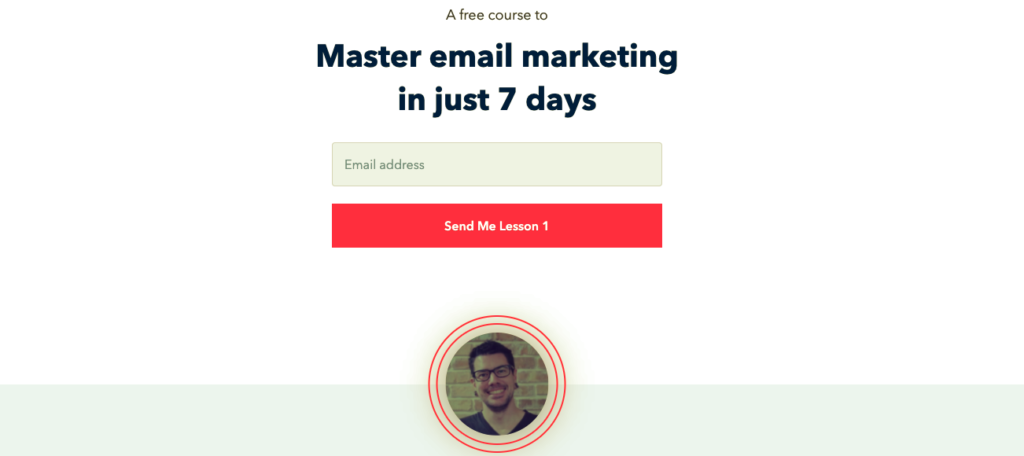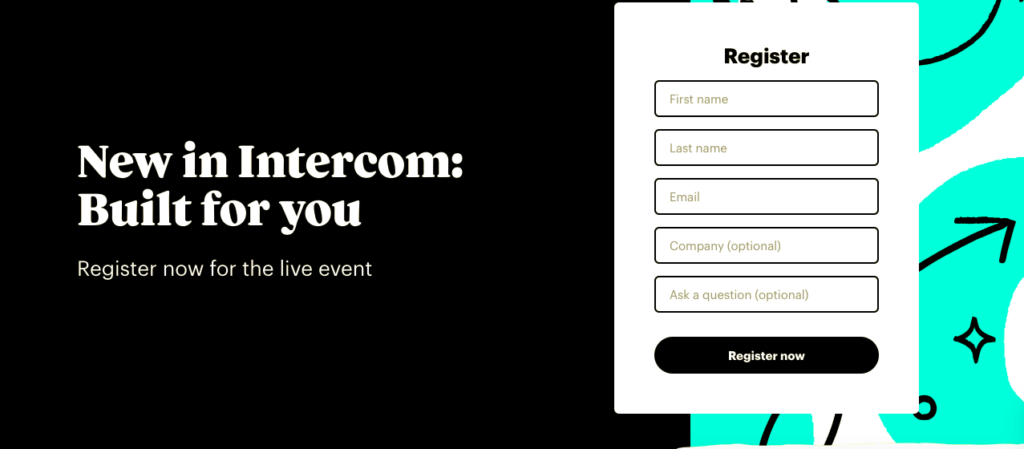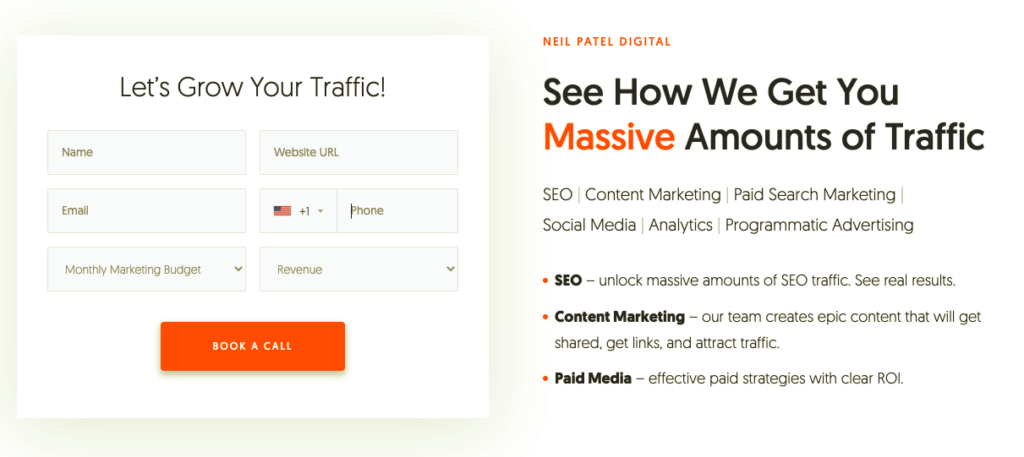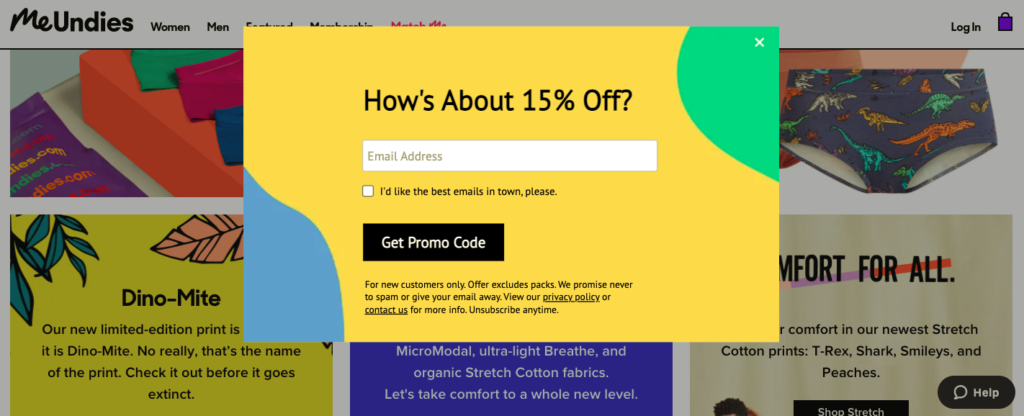- Why Do You Need a Lead Magnet?
- What Makes a Lead Magnet Effective?
- Solve the Problem
- Keep It Unique
- And Very Specific
- Don’t Limit Yourself to One Lead Magnet
- Keep It Short
- Make a Catchy Title
- Make It Look Professional
- Deliver It Immediately
- 25 Lead Magnet Ideas To Try Out
- 1. Check List
- 2. Cheat Sheet
- 3. Ultimate Guide
- 4. Ebook
- 5. Ebook Preview
- 6. Workbook or Worksheets
- 7. Templates
- 8. Email Newsletters
- 9. Email Course
- 10. Webinars or Live Events
- 11. Video Course
- 12. Tools
- 13. Case Study
- 14. Reports
- 15. Bonus Pack
- 16. Quizzes or Tests
- 17. Calendar or Planner
- 18. Infographics
- 19. Free Consultation
- 20. Free Trial
- 21. Special Offers
- 22. Access to a Private Сommunity
- 23. Release Notice
- 24. Live Chat
- 25. Kit
- How to Create a Lead Magnet and Where to Place It?
- Understand Who Your Ideal Client Is
- Create a Lead Magnet
- Place It on Your Website Page
- Wrapping Up
A Comprehensive Lead Magnets Guide: How They Work, Why You Need Them, and 25 Lead Magnet Ideas with Examples
September 14, 2021 8 min. read

Contents:
Try AI-Driven Insights
Monitoring for Free
Discover new business ideas and growth opportunities using
our AI-powered insights monitoring tool
A lead magnet is simply classified as any free and valuable content that your potential clients (primarily website visitors) can access, subscribe to or download easily.
When they’re valuable enough, they will be an engaging incentive for clients to offer their emails and other personal details. Thus, the creation and placement of a lead magnet is one of the most effective ways to grow a high-quality database of prospective clients. Importantly, a lead magnet is an easy way for prospects to get a general idea of your products or services that are useful for their specific needs, or for meeting their long-term strategies — in other words, to tell if things will work between you.
Unsurprisingly, a lead magnet will very likely clarify things between you and your clients. Not only will it help grow your target client list, but it is a valuable exchange that fosters ongoing relationships. So now we’ve come to another insight — a lead magnet should be useful and problem-solving. But before going into too many details about what a lead magnet should and should not be, let’s summarize why you need one.
Why Do You Need a Lead Magnet?
• A lead magnet does not just get you an email address. You can also use it to showcase your product.
• A lead magnet is a great way to engage your prospects and gain their trust so that you have a chance to increase sales in the future.
• And if it turns out to be problem-solving and valuable enough, you will have an advantage over your competitors.
Now that we’ve demonstrated the importance of a lead magnet, and the value it can bring, it’s time to tell you how to create a lead magnet that will bear fruit.
What Makes a Lead Magnet Effective?
To make a long story short, a lead magnet should be hyper-relevant to your audience — they should be desperate to push that “Download” button and don’t even worry about how many fields they need to fill in. Don’t get us wrong. You shouldn’t go crazy asking them to fill in a page-length form. Keep the form short and carve the letters two feet high — your lead magnet should be HYPER-RELEVANT. Now let us sort it out for you step by step.
Solve the Problem
A good lead magnet should help your potential clients to solve the problem. That’s what makes it relevant. Think of what their wants and needs are, what they might want to improve. This way, you will figure out how you can help them and what can become your possible lead magnet.
Keep It Unique
Don’t try to reinvent the wheel. Make sure your lead magnet is novel (at least in some way), and that it hasn’t been put forth a hundred times before by others. Even if the problem you are trying to solve is not new, your method of delivery should differ from your competitors. In other words, take a fresh look at it, and if you can come up with something unique — go ahead!
And Very Specific
Don’t try to make your lead magnet look like it can solve all your prospects’ problems, and certainly don’t try to make it a full-on business guide. Perhaps the best option is to focus on your expertise — something that you know inside out.
In other words, the more specific the topic is, the higher the conversion of leads to buyers. Why? As simple as it is — you know how to solve their problem, and they are very willing to pay for it. And please don’t worry that there will be fewer downloads. There’s a solution to that as well.
Don’t Limit Yourself to One Lead Magnet
Yes, here, you have to put in a little more work and create lead magnets for each audience segment. But don’t worry, there’s no need to offer a complete solution for each lead separately, just a lure. We are sure you can come up with a couple of hot topics relevant enough for your potential customers.
Keep It Short
Don’t go wild trying to compile a lead magnet that’s an academic volume. While you might think it’s the best idea ever, your leads won’t agree and would prefer something shorter. Don’t beat around the bush. Cut to the chase from the first line.
Make a Catchy Title
The title should be short, simple and straightforward, but it should also “sell.” The title should convince the audience that they simply can’t miss your offer. That’s easy to say. Believe us. We know how hard it is to create copy, especially short copy. If you do feel this task is too challenging, don’t hesitate to seek assistance. Luckily, smart software can help.
Make It Look Professional
Looks matter. You won’t gain credibility from your prospects if your lead magnet is poorly designed. Ensure the end result is high-quality and doesn’t look amateurish — that your images, text lines and other elements are in order.
Deliver It Immediately
Everyone likes to get instant results. The faster, the better. So for a lead magnet to be effective, it should be delivered immediately. Ideally, place the link on the page so they don’t need to jump through dozens of pages. But even if you decide to send the document to their email, do it without any delays.
25 Lead Magnet Ideas To Try Out
Okay, now when you know what an effective lead magnet should be, let’s look at lead magnet examples that inspire. So if you are seeking inspiration, be our guest.
1. Check List
Checklists are usually lists of tasks your audience can complete to reach a very specific goal. And they are undoubtedly great. People love them because they are short, simple and actionable. You don’t need a lot of time to create them — even your blog posts can be transformed into checklists.

Image source: lexielimitless.com
2. Cheat Sheet
Cheat sheets are also conventional lead magnets that help your prospects to apply a complex strategy or a process. They have a similar purpose as checklists but contain more thorough information. Not only do they show steps that readers can follow to achieve their specific goal, but they also provide them with additional information on this topic.
Unlike long-read blog posts or comprehensive guides, readers get a shortlist of critical points that can be studied in minutes. And perhaps most importantly, they check them any time they need to follow those steps.
3. Ultimate Guide
A guide is another document you can use as a lead magnet. In short, it is a collection of blog posts about a particular subject compiled into a single downloadable document where your prospects can find everything they need to know about a specific problem. Wait a second. What’s the difference between an ebook and a guide? You’re not recycling posts from your blog but putting them together and providing links.

Image source: piperdeyoung.com
4. Ebook
If you are giving the same advice to your audience over and over again, maybe it’s time to compile your knowledge into a downloadable lead magnet. But don’t get us wrong, what we call a book can be anything starting from 15 pages that covers a broader topic than a guide.
5. Ebook Preview
If you plan to write a decent book that you hope to sell later, you can also turn it into a lead magnet simply by making one chapter or several pages downloadable. It is an easy way to prove your expertise and showcase your product because your people are more likely to buy something they can see than some pig in a poke. So this “try before you buy” can be your way to go.
6. Workbook or Worksheets
It’s one thing is to learn about a subject by just reading, but it’s another when your prospects can put their knowledge into practice and take action. The upside is that unlike writing a proper ebook, creating a workbook or worksheets will not take that much of your time.

Image source: creativemarket.com
7. Templates
This type of lead magnet fits all industry niches. If you are a design company, you can offer ready-to-use graphic design templates. But you can also create text templates that users can customize by filling in the blanks to suit their purposes. As long as the document provides an outline, any sort of document can be used as a template. In other words, one size fits all.
8. Email Newsletters
If your email newsletter is a real gem, you can easily use them as your lead magnets. But think hard about how to encourage your prospects by identifying the benefits of your email letters. Whether you’ll be sending a weekly squeeze of carefully selected materials or a short daily email for their inspiration, you had better make that nice and clear.
Signum.AI, for example, packs market trends into a weekly newsletter, not only discovering new promising tools but also scoring more leads.
9. Email Course
If you feel like you can do better than just a newsletter, an email course as a lead magnet might be an excellent idea for you! In addition, you can continually monetize it by offering an extended version for a subscription.

Image source: emailmastery.org
10. Webinars or Live Events
For a potential customer, a webinar is a great way to get a very detailed solution to their problem and a clear idea of who they will be working with. And just because webinars and live events are among the most personalized types of interactions with clients, they feel pretty comfortable sharing their personal information.
And by the way, it’s not even necessary to make them live — you can use any webinar recordings to follow up with the participants after the event is finished.

Image source: Intercom
11. Video Course
If going live is too much of a challenge for you now, to show your expertise and your face to potential clients, short educational videos and how-to videos are always a good start. There is less pressure on you as you can film, refilm and edit them to get the best result. But make sure they look professional.
12. Tools
If you are a design agency or a software development company, you can think of using a free tool as a lead magnet. Keep in mind that it should be tied to your product or industry and help your potential customers solve one specific problem or create something new.
Typical examples are calculators, fonts, tools for editing and design and much more. Users will be happy to share their contact details in exchange for something they really need. Make it simple and user-friendly and provide instructions on their next possible step. At the end of the day, if your tool proves to be helpful, they will come back.

Image source: hewittavenue.com
13. Case Study
If you regularly publish blog posts about your customers’ success stories, this one will be a no-brainer. You can easily pack it into a comprehensive case study and use it as a lead magnet. Even if you don’t have any materials ready to use but have a dozen of happy, loyal customers, it’s worth trying. Make sure to ask for their permission to use this information publicly, then go ahead!
14. Reports
Industry trends and reports are crucial for many businesses. If you already have valuable industry insights, you can pack them in a report and offer them in exchange for a subscription, saving your prospects hours of browsing through numerous websites.
15. Bonus Pack
Bonus packs usually include additional exclusive content not shown on your website that can only be received by opting in. Thanks to its exclusive nature, it works exceptionally well at the end of blog posts and encourages readers to leave their contact details.
16. Quizzes or Tests
Gamification can effectively attract leads, especially if your brand voice is more fun than serious. Your potential customers will appreciate such a natural and engaging way of communication. You can tease them a little bit and ask for their contact details after they finish the quiz so that you can send them the results via email. Thus, they will be even more willing to fill in the form.

Image source: prose.com
17. Calendar or Planner
This type of a lead magnet might be perfect for those businesses that work on strategies or planning. By offering downloadable planners, you guide your audience through the exact process (or a slightly pinched one) they will be using when they become your clients. That’s why it’s a great way to show your expertise and prove the effectiveness of your methods.
Imagine. If you can help your potential customers achieve their goals with a simple planner, how much will they trust you when you start working with them?.
18. Infographics
Another good freebie. While infographics are great content to share on your site, you can also consider creating one with the sole aim of sharing it as a lead magnet. There are many online infographic tools that you can use to create an infographic that makes complex concepts easier to assimilate. Considering that a well-crafted infographic has the potential to go viral, it can be a great way to put your brand on the map.
19. Free Consultation
If you provide consulting, educational, or even medical services, you can use a free consultation as a lead magnet. And if you manage to prove yourself as an expert, that might lead directly to a purchase.

Image source: neilpatel.com
20. Free Trial
Many SaaS companies use free trials or demo versions of products as their lead magnets. So when your prospects decide they want your product, they can test it for free. The benefit of this lead magnet is that you don’t need to create it specifically for the purpose of collecting emails. In fact, if you provide them with a great experience and good support, there’s a high chance they will fall in love with your product and turn into customers.

Image source: canva.com
21. Special Offers
If you are in the eCommerce business, you can easily exchange your website visitors’ details for a special offer like free shipping, discounts on their first order, or vouchers — whatever fits your goals. And most importantly, this type of lead magnet can convert them directly into customers.

Image source: meundies.com
22. Access to a Private Сommunity
Most customers value community, want to share their experiences and opinions, and get insights from their industry fellows. Being part of such a community can become a tempting offer your prospects won’t resist—and they’ll be happy to share their contact details in return. Luckily, most of the popular social media platforms like Facebook and LinkedIn allow you to do this.
Besides, there is absolutely no need to produce content. The members will generate it by themselves.

Image source: glitch.com
23. Release Notice
To stir up your leads’ interest in your offer, make it limited in time so that they will look forward to getting it as soon as it becomes available. But to get the update, they need to sign up for your newsletter. You can use this type of lead magnet for product updates and new launches, ebooks, courses and webinars.
24. Live Chat
You haven’t expected this one here, have you? But as it prompts your website visitors to start a conversation, it can serve as a great lead magnet without any additional forms needed. You can set it in such a way that later on, when they get the information they want, your chatbot can ask them to leave an email so that they will either receive the answer there, in case an immediate solution is not possible, or just as a sign up for a newsletter.
25. Kit
Last but not least is a combination of various types of lead magnets that are packed into a comprehensive toolkit that saves your prospects heaps of time researching. The good thing is that whatever feels useful and helpful can go into this kit. Make sure that it is well structured and doesn’t look messy so that users don’t get confused by the various tools and resources you offer.
How to Create a Lead Magnet and Where to Place It?
The better you design your lead magnet, the more converting it will be. By following these few steps, you will help you get started.
Understand Who Your Ideal Client Is
Understanding who your ideal client is, their needs and wants is always a good place to start. Thus you will know precisely what they might be happy to get in exchange for their emails.
Search queries, your blog statistics, and social media posts come in handy when brainstorming lead magnet ideas. Based on this data, you will be able to create a relevant lead magnet.
Create a Lead Magnet
After you’ve come up with an idea for your lead magnet, it’s time to create it. You will need to choose whether it will be a lead form or pop-up. Consider all the elements of design such as buttons, colors, placement, and so on. And, of course, work on the copy and headline.
Here are a few tips to writing catchy copy for your lead form or pop-up:
• give it a clear name
• make it actionable
• make it noticeable
Place It on Your Website Page
You can place a lead form on the most visited pages, your homepage or at the end of a blog post — whatever the place is, you visitors feel like it’s an obvious step to take.
Wrapping Up
Hope we’ve helped you to sort out most of your questions about lead magnets and provided you with some insights into what your ideal lead magnet can be. Choose those that suit your business goals, always keeping your prospects in mind. And this cannot be said often enough — test, experiment and adjust!
More useful content on our social media:
